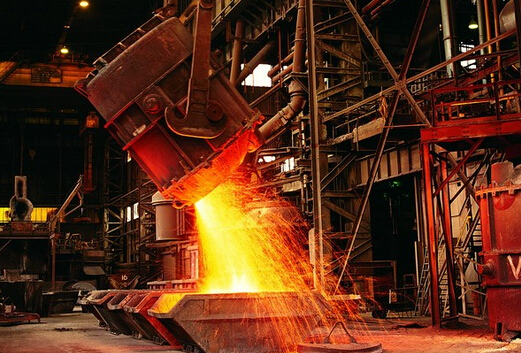The casting temperature of lost foam casting not only determines the type and quantity of the decomposition products of foam pattern, but also the way of escaping the coating into the mold, and also affects the temperature drop of the metal liquid at the filling front. For Al and Mg alloys, when the casting temperature of lost foam casting is lower than 800 C, the decomposition products of foam pattern are mainly liquid, so the influence of casting temperature on lost foam casting is various. On the one hand, it can not only reduce the viscosity of the liquid decomposition products, but also improve the temperature of the coating, thereby improving the wettability of the coating to the liquid decomposition products of the foam pattern, increasing the speed of the liquid product escaping from the coating, and reducing the negative effects of the decomposition products on the filling ability of the liquid metal. On the other hand, it can increase the superheat of liquid metal and prolong its flow time. Therefore, the filling ability of magnesium alloy will increase obviously with the casting temperature.
Under the condition of vacuum, the degree of influence of pouring temperature on mold filling ability of lost foam casting will be higher than that without vacuum. With the increase of thickness and width of foam pattern, the influence of pouring temperature on filling ability will increase. In addition, because the heat capacity of magnesium alloy is smaller than that of aluminum alloy, the effect of pouring temperature on the filling capacity of magnesium alloy is much smaller than that of aluminum alloy. If the pouring temperature of lost foam casting of aluminum alloy is increased to more than 800 ℃, part of the liquid decomposition products of the pattern will produce further gasification, which will not only increase the air gap pressure at the filling front, but also further reduce the temperature at the filling front, so as to reduce its filling ability.
For cast iron, the decomposition products of the pattern are mainly gaseous under the corresponding pouring temperature of lost foam casting. With the increasing pouring temperature of lost foam casting, the volume of gaseous decomposition products increases gradually, but the ability of gaseous products to escape from the coating does not change significantly. Therefore, increasing the pouring temperature of lost foam casting will increase the air gap pressure at the front of mold filling, and then reduce the mold filling capacity of liquid metal, weakening the beneficial effect of increasing superheat on mold filling capacity. For cast iron, the increase of pouring temperature in lost foam casting can not only improve the mold filling ability of liquid metal, but also have the opposite effect. Therefore, in the process of casting steel castings and iron castings with lost foam casting, when there are “insufficient pouring” defects, we should try to improve the permeability of the coating, rather than blindly improve the pouring temperature of lost foam casting, because this can not eliminate the defects, but make the casting grains coarser and reduce its mechanical properties., but make the casting grains coarser and reduce its mechanical properties.

